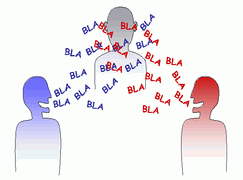How we focus on specific sounds at cocktail parties
 Washington, Dec 1: Using ‘virtual ears’, researchers at Oxford University have uncovered the mechanism behind what is known as ‘cocktail party effect’, i. e. how brains can pinpoint and focus on particular sounds among a background of noise.
Washington, Dec 1: Using ‘virtual ears’, researchers at Oxford University have uncovered the mechanism behind what is known as ‘cocktail party effect’, i. e. how brains can pinpoint and focus on particular sounds among a background of noise.
The new study may pave the way for the emergence of hearing abilities in children and for restoring hearing after fitting hearing aids and cochlear implants.
In humans hearing continues to develop since birth and throughout childhood. They also develop the ability to distinguish between sounds coming from different directions and to understand speech in difficult acoustic environments, such as a busy room with many echoes.
It is known that nerve cells in the superior colliculus, one of the brain regions responsible for processing sound, mature during infancy, and then develops a preference for specific sound directions. Thus, the active nerve cells signals where sounds are located, and the brain forms an auditory map of the environment.
In the new study, led by Professor Andrew King, a Wellcome Trust Principal Research Fellow at the University of Oxford, the scientists successfully developed a method that enables the changes in the selectivity of the nerve cells for different directions of space to be to separated out from the development of the auditory map.
The scientists applied the new technique on ferrets by using ‘virtual ears’ which can enable an infant ferret to hear sounds just like an adult.
The researchers then placed tiny microphones inside the opening of the ears of adult ferrets to capture the sound as modulated by an adult head.
When played back over headphones to an infant ferret, the sound seems as if coming from outside the ferret''s head, but mimics what an adult would hear.
The researchers measured the responses of nerve cells in the brain, and saw how the infant brain differs from the adult and demonstrated that the development of the selectivity of the nerve cells for sound location and their assembly into the auditory map are influenced by independent factors.
"Our research showed that the region of space to which the nerve cells respond is determined by the shape of the ferret''s ears and their distance apart, both of which change with age. On the other hand, the gradual development of the auditory map is influenced by the experience of the sounds that are heard," Science Daily quoted Professor King as saying.
According to King, the technique has implications for a child’s ability to learn how to hear after a hearing aid or cochlear implant has been fitted. Other work from this group has shown that even the adult brain is remarkably able to adapt.
"We have shown that the neural circuits of our hearing apparatus can adjust to a loss of hearing in one ear. Clearly, the adult brain is still plastic and able to adapt, so fitting hearing aids and cochlear implants in adults is worthwhile," said King.
The study was published in the Journal of Neuroscience. (ANI)